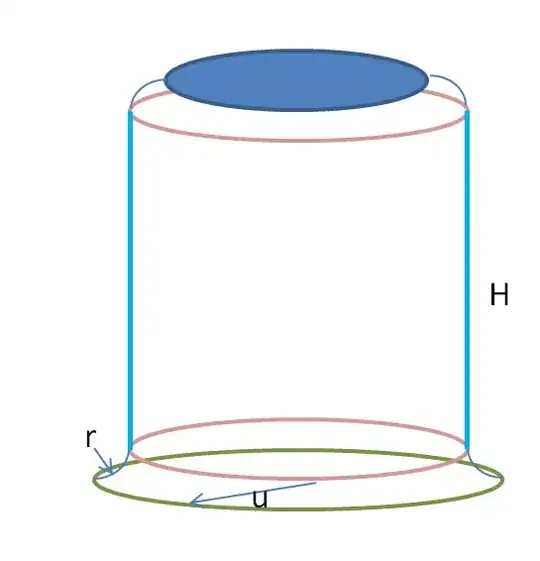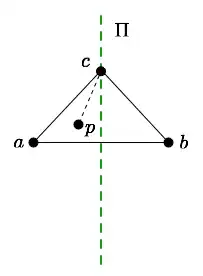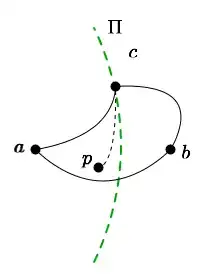To confirm it's not true with a concrete example:
Take three points on the equator of the unit sphere, equispaced, as your triangle. Then the distances are each $2\pi/3 \approx 2.1$. But the distance from one point, up over the north pole, to the far side, is $\pi$, which is considerably larger.
I also think that there's no theorem to be had here.
Consider two concentric equilateral triangles in the plane. Lift the inner one up along the plane normal. And now blend from the inner triangle to the outer one smooothly. (It's perhaps easier to see this with concentric circles. Fill in the raised inner circle with a flat disk, and around the edge of the raised inner circle, add a 1/4-circle at each point, joining smoothly to the disk, and turning downward.)
Do the same think to the larger, lower circle, but with the "flange" interior to the circle, and rising up.
Now join these two flanges with a cylinder. The cylinder can be arbitrarily long. If you place three vertices equidistant along the bottom circle, they form a triangle for which interior segments can be very long.
Here's a (rough) picture:

The "inner circle" bounds the blue disk at the top. The small blue quarter circle is revolved about the vertical axis to form a little "flange" that joins this top disk to the vertical bright-blue cylinder. A similar "flange" joins the bottom of the vertical cylinder to the large (green) circle at the bottom.
By making the bottom radius $u$ large, and making $r = \frac{u}{4}$, say, the principal curvature of the flanges in the radial direction is $\frac{1}{r} = \frac{4}{u}$, which is small, and in the azimuthal direction, it's no more than the curvature of the red circles, which have radius at least $u/2$, hence curvature at most $\frac{2}{u}$. So for large $u$, I can make the principal curvatures arbitrarily small (and the Gaussian curvature as well, of course). But the arc that starts at the bottom left corner of the pic, follows the blue line labelled "$r$", then the bright blue line, then the next quarter-circle, straight across the blue disk, and down the other side...that has length $2 \pi r + 2H = \frac{\pi u}{2} + 2H$. Since $H$ is arbitrary, I can, with a curvature-bounded surface, get an interior ray of a triangle (the "triangle" being three points on the bottom green circle) whose length is an arbitrary multiple of the edge lengths.



